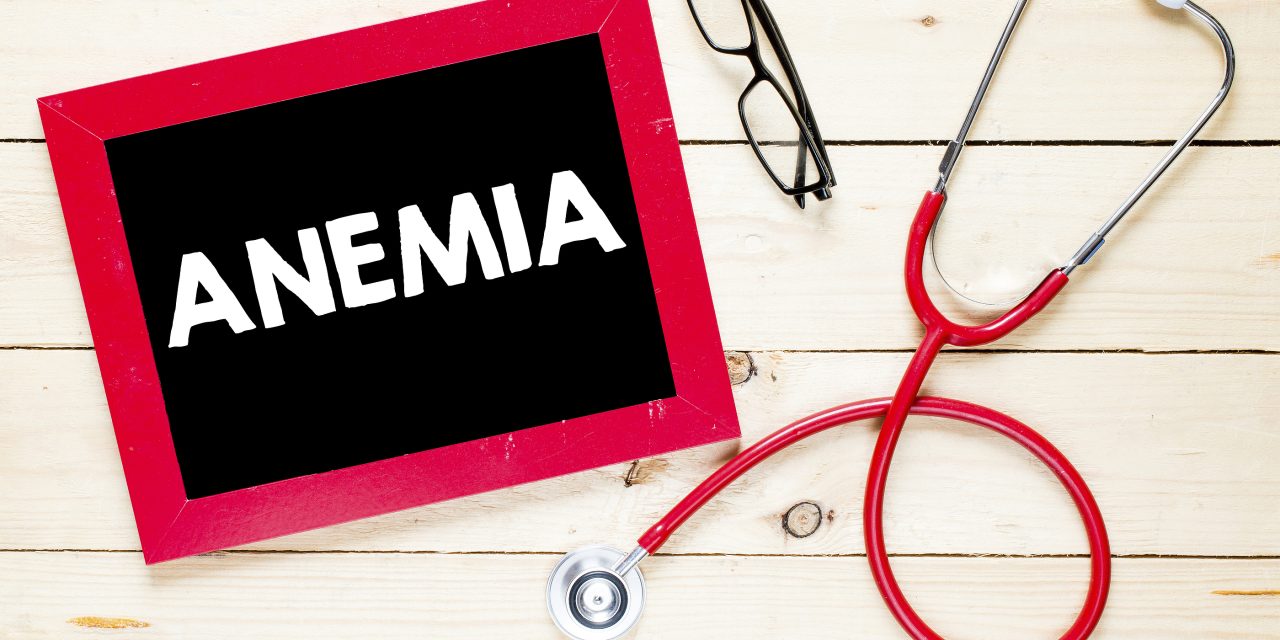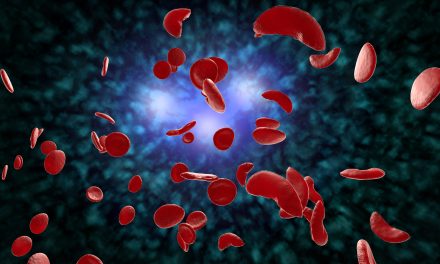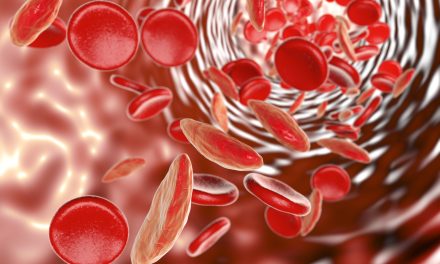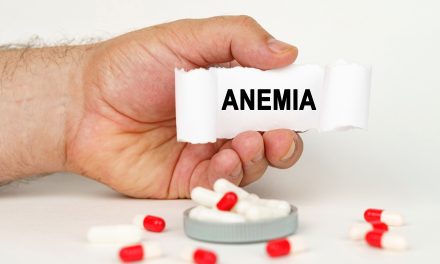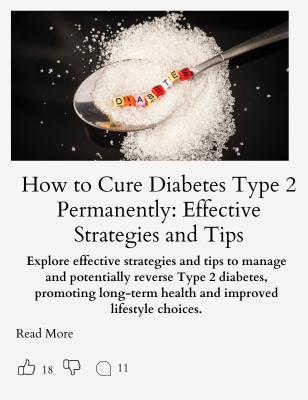Anemia is a condition characterized by a deficiency of red blood cells or hemoglobin, which are critical for transporting oxygen throughout the body. This lack of oxygen-carrying capacity can lead to various symptoms, including fatigue, weakness, and shortness of breath. Diagnosis of anemia is typically confirmed through a complete blood count (CBC) test, which measures the levels of various blood components, including hemoglobin and hematocrit.

Treatment for anemia depends on its cause, severity, and any underlying health issues. Nutritional interventions often include increasing the intake of iron, vitamin B12, and folic acid, which are essential for red blood cell production. For anemia caused by chronic diseases, managing the primary illness is also crucial. In more severe cases, medical treatments may involve supplements, medications, or even procedures like blood transfusions or bone marrow transplants.
Lifestyle modifications are an essential aspect of managing anemia, including dietary changes and exercise adjusted to individual energy levels. In certain cases, alternative therapies may provide supportive care, but it is vital to consult with healthcare providers before pursuing them. Regular follow-up and monitoring are essential for adjusting treatment plans and ensuring the best outcomes for patients, including those in special populations like pregnant women and the elderly.
Key Takeaways
- Anemia treatment includes dietary changes, supplements, and managing underlying conditions.
- Severity and type of anemia dictate the specific treatment approach.
- Ongoing monitoring is critical to ensure effectiveness of anemia treatment.
Understanding Anemia
Anemia is a medical condition characterized by a deficiency of red blood cells or hemoglobin, impacting the blood’s ability to carry oxygen. Determining the cause, understanding the types, and recognizing symptoms are crucial steps in diagnosis and treatment.
Causes of Anemia
Anemia can arise from a multitude of causes, which are typically classified into three broad categories: production loss, destruction, or loss of red blood cells. The following table outlines specific causes under each classification:
| Production Loss | Destruction | Loss |
|---|---|---|
| Iron deficiency | Hemolysis | Menstruation |
| Vitamin deficiencies (B12 or folate) | Sickle cell disease | Trauma |
| Bone marrow diseases | Thalassemia | Surgery |
| Chronic diseases | Gastrointestinal bleeding |
Types of Anemia
Anemia is not a single disease but a symptom of several different underlying conditions. The main types include:
- Iron-Deficiency Anemia: The most common form, often due to blood loss or inadequate dietary iron.
- Vitamin-Deficiency Anemia: Caused by a lack of nutrients, particularly vitamin B12 and folate.
- Aplastic Anemia: A rare, life-threatening condition where the bone marrow fails to produce enough blood cells.
- Hemolytic Anemia: Occurs when red blood cells are destroyed faster than the bone marrow can replace them.
- Sickle Cell Anemia: A genetic disorder leading to the production of abnormally shaped red blood cells.
Symptoms and Diagnosis
Symptoms of anemia may vary based on the type and severity but commonly include:
- Fatigue and weakness
- Pale or yellowish skin
- Irregular heartbeats
- Shortness of breath
- Dizziness or lightheadedness
For diagnosis, medical professionals rely on:
- Complete Blood Count (CBC): A standard test to evaluate the various components of blood including hemoglobin and hematocrit.
- Physical Examination: To check for signs of anemia and to discuss symptoms.
- Additional Tests: To determine the cause of anemia, such as checking iron, folate, and vitamin B12 levels, or performing bone marrow biopsies, when indicated.
Nutritional Interventions
Effective management of anemia often requires dietary adjustments to increase the intake of essential nutrients that support red blood cell production and iron absorption.
Iron-Rich Diet
Individuals with anemia should focus on consuming iron-rich foods. Two forms of dietary iron exist: heme iron, which is better absorbed and found in animal products, and non-heme iron, which is found in plant sources.
Heme Iron Sources:
- Red meat (e.g., beef, lamb)
- Poultry (e.g., chicken, turkey)
- Fish (e.g., salmon, tuna)
Non-Heme Iron Sources:
- Lentils and beans
- Tofu and tempeh
- Dark, leafy greens like spinach and kale
Incorporating vitamin C-rich foods (e.g., oranges, bell peppers) with non-heme iron sources can enhance iron absorption.
Vitamin Supplementation
Vitamin B12 and Folic Acid: These vitamins are crucial for red blood cell formation. Deficiency in either can cause anemia.
Table of Daily Recommended Doses:
| Vitamin | Recommended Daily Dose |
|---|---|
| Vitamin B12 | 2.4 µg for adults |
| Folic Acid | 400 µg for adults |
Supplementation should be tailored to individual needs and under supervision of a healthcare provider, especially for those with conditions like pernicious anemia requiring higher doses.
Medical Treatments
A comprehensive approach to treating anemia involves medical interventions tailored to the specific type and cause of the condition. This section details standard pharmacotherapy and blood transfusion options.
Pharmacotherapy
Pharmacotherapy for anemia typically includes iron supplements, which are crucial for those diagnosed with iron-deficiency anemia. Patients must adhere to the prescribed dosage often starting with 150 to 200 mg of elemental iron per day. In cases of vitamin deficiency anemias, oral B12 or folate supplements are necessary. Erythropoiesis-stimulating agents (ESAs) are another cornerstone treatment, particularly in anemia associated with chronic kidney disease, to stimulate the bone marrow production of red blood cells.
Blood Transfusion Options
Blood transfusions provide immediate relief for patients with severe anemia or those undergoing surgery. Red blood cell transfusions are the most common, directly increasing hemoglobin levels. However, this option requires compatibility testing and has potential risks such as transfusion reactions or iron overload. Transfusion thresholds and triggers are carefully evaluated by healthcare providers, with a typical hemoglobin threshold set at <7 g/dL for stable patients without cardiovascular disease.
Lifestyle Modifications
In managing anemia, certain adjustments in one’s lifestyle can have a positive impact on the condition. These modifications primarily include dietary changes and the incorporation of physical activity suited to an individual’s capacity and health status.
Dietary Changes
Iron-Rich Foods. A diet rich in iron is crucial for those with anemia, as iron is essential for the production of hemoglobin. Incorporating foods such as:
- Red meat and poultry
- Seafood
- Beans
- Dark leafy greens like spinach
- Iron-fortified cereals and breads
Vitamin C for Iron Absorption. To enhance iron absorption, it’s recommended to consume vitamin C-rich foods such as oranges, strawberries, and bell peppers alongside iron-rich foods.
Supplements. In some cases, dietary changes may not be sufficient. Iron supplements might be required, but should only be taken under healthcare provider supervision to avoid iron overload.
Physical Activity
Tailored Exercise Regimen. A moderate exercise routine can help stimulate the production of red blood cells. However, activities should be tailored to individual energy levels to prevent excessive fatigue.
Monitoring. Patients with anemia should monitor their exertion levels during physical activity and consult their healthcare provider to adjust exercise plans accordingly.
Alternative Therapies
When addressing anemia, some individuals explore alternative therapies in conjunction with traditional treatments. These alternatives may include:
- Herbal Supplements: Certain herbs like nettle leaf, dong quai, and dandelion may support blood health. However, one should consult a healthcare provider before using these, as they can interact with medications.
- Nutritional Adjustments: Anemic individuals can benefit from a diet rich in iron, vitamin B12, folate, and vitamin C which aids iron absorption. Foods high in these nutrients include leafy greens, legumes, nuts, seeds, and citrus fruits.
- Acupuncture: This traditional Chinese therapy is sometimes used with the aim of stimulating the body’s natural healing processes and improving energy flow, which could theoretically assist in managing anemia symptoms.
- Yoga and Meditation: These practices may help in reducing stress and improving overall well-being. While they do not directly treat anemia, they can be complementary to a holistic approach to health.
- Homeopathy: A small number of people with anemia may use homeopathic remedies tailored to their specific symptoms. The effectiveness of homeopathy for anemia lacks robust scientific evidence, and thus should be approached cautiously.
It is critical to note that alternative therapies should not replace conventional medical treatments for anemia. Any alternative treatment should be discussed with a healthcare professional to ensure safety and appropriateness for one’s specific health condition and to avoid unforeseen complications.
Managing Complications
When treating anemia, it’s crucial to manage complications such as fatigue and the risk of infection, which can affect the patient’s quality of life and recovery process.
Dealing With Fatigue
Patients with anemia often experience fatigue due to insufficient oxygen in their tissues. To manage this:
- Establish a routine: Encourage regular sleep patterns by going to bed and waking up at the same time each day.
- Balance activity and rest: Short, frequent breaks may help conserve energy. Advise on pacing activities throughout the day.
Preventing Infection
Anemia can impair the immune system, increasing the risk of infections. Precautionary steps include:
- Hygiene: Maintain rigorous handwashing practices and avoid contact with sick individuals.
- Diet: Consume foods rich in vitamins and minerals to help boost the immune system; for instance, citrus fruits for vitamin C and red meats for iron.
Monitoring and Follow-up
Proper monitoring and follow-up are essential for managing anemia effectively. After initiating treatment, healthcare providers usually schedule regular appointments to:
- Assess symptoms to determine improvement or progression.
- Conduct blood tests to track hemoglobin levels and red blood cell counts.
- Adjust treatments as needed based on response and side effects.
Frequency of Follow-up Appointments
- Initial Treatment Phase: usually every 2-3 weeks.
- Maintenance Phase: typically every 2-6 months, depending on the underlying cause and severity of anemia.
Key Blood Tests
- Complete Blood Count (CBC): to monitor hemoglobin, hematocrit, and red blood cell indices.
- Iron studies: to measure iron levels, total iron-binding capacity (TIBC), and ferritin.
- Reticulocyte count: to evaluate bone marrow response to treatment.
Lifestyle and Dietary Monitoring
- Doctors may recommend tracking dietary intake to ensure sufficient iron, vitamin B12, and folate intake.
- Patients on iron supplements may need to monitor for signs of gastrointestinal side effects.
Patient Education
Educating patients about their condition is crucial. They should be aware of:
- Symptoms that require immediate medical attention such as severe weakness, chest pain, or difficulty breathing.
- The importance of adherence to prescribed treatments and monitoring schedules.
Electronic Health Records (EHR) can be utilized to facilitate efficient follow-up, ensuring timely intervention and adjustment of therapeutic strategies. EHR systems may provide alerts for due appointments and test schedules, enhancing patient compliance and treatment outcomes.
Anemia in Special Populations
Anemia requires careful management in specific groups such as pregnant individuals and children, due to their unique physiological needs and the potential complications that anemia can cause in these populations.
Anemia in Pregnancy
Pregnant individuals need increased iron to support the growing fetus and placenta, as well as their own increased blood volume. Iron deficiency anemia is common during pregnancy and can lead to adverse maternal and fetal outcomes if not adequately managed. Treatment options include:
- Oral Iron Supplements: Standard first-line treatment usually involves iron supplementation in the form of ferrous sulfate, ferrous gluconate, or ferrous fumarate.
- Dietary Modification: Emphasis on iron-rich foods, such as leafy green vegetables, lean meat, and fortified cereals, can help meet increased iron needs.
- Parenteral Iron: In cases where oral iron is not tolerated or ineffective, intravenous iron therapy may be warranted.
Monitoring hemoglobin levels and iron stores throughout pregnancy is critical to ensure treatment efficacy and adjust therapy as needed.
Pediatric Anemia
Children with anemia may experience developmental delays and behavioral issues. Treatment and management differ based on the cause of anemia but generally include:
- Dietary Adjustments: Ensuring a balanced diet rich in iron, vitamin B12, and folate, which are essential for red blood cell production.
- Supplementation: Iron supplements are often prescribed in liquid form for young children and as chewable tablets for older children.
It is important to identify the underlying cause of anemia in children, whether it be nutritional deficiencies, chronic disease, or genetic conditions, to provide appropriate treatment and follow-up care. Regular screening for anemia is recommended for children at risk.
Recent Advances in Anemia Treatment
Recent years have seen significant progress in the treatment of anemia, a condition characterized by a deficiency in red blood cells or hemoglobin. One breakthrough has been the development of hypoxia-inducible factor (HIF) stabilizers. These drugs mimic the body’s response to low oxygen levels, stimulating the production of red blood cells and improving iron metabolism.
Another innovation is the use of erythropoiesis-stimulating agents (ESAs), which have been reformulated to have a longer half-life and require less frequent dosing. ESAs are used primarily to treat anemia related to chronic kidney disease and chemotherapy.
The introduction of iron-based phosphate binders has provided a dual benefit for patients with kidney disease. These binders not only control hyperphosphatemia but also add supplemental iron, which is beneficial in the anemia management.
Recent advancements also include:
- Genetic testing: Used to tailor treatments for anemias caused by genetic disorders, like sickle cell anemia and thalassemia.
- Oral iron supplements: New formulations improve absorption and reduce gastrointestinal side effects.
- Blood substitutes and oxygen therapeutics: Although still in development, these products could provide alternatives to blood transfusions.
Advancement in nutritional genomics has shed light on the complex interplay between diet, genes, and anemia, leading to more personalized dietary recommendations. Clinical trials continue to test new therapies, including bone marrow stimulants and targeted drugs for anemia of chronic disease. These treatments are expanding the arsenal against various forms of anemia and improving patient outcomes.
Prevention Strategies
Anemia is often preventable through dietary and lifestyle choices. To reduce the risk, one should consider the following strategies:
Diet:
A balanced diet rich in iron, vitamin B12, folate, and vitamin C can help prevent anemia. Iron can be found in both plant and animal sources:
- Animal sources: Red meats, poultry, and fish
- Plant sources: Lentils, beans, and fortified cereals
Including sources of vitamin C like oranges or bell peppers can improve iron absorption. Folate and vitamin B12 are abundant in leafy greens, eggs, and dairy products.
Supplements:
For those at risk of anemia, such as pregnant women, a healthcare provider may recommend supplements like iron or vitamin B12.
Regular Checkups:
Regular blood tests can detect early signs of anemia, allowing for timely intervention.
Managing Chronic Conditions:
Chronic conditions like kidney disease can lead to anemia. Proper management of these conditions is crucial.
Lifestyle Choices:
Moderating alcohol consumption and not smoking are advised, as these can affect the body’s ability to produce healthy blood cells.
| Key Nutrients | Recommended Sources |
|---|---|
| Iron | Red meats, poultry, fish, lentils, beans |
| Vitamin B12 | Eggs, dairy products, fortified cereals |
| Folate | Leafy greens, citrus fruits, nuts |
| Vitamin C | Oranges, strawberries, bell peppers, kiwi |
One should be mindful of their body’s signals and seek medical advice if symptoms of anemia arise.
Frequently Asked Questions
In addressing anemia, it is vital that individuals understand the importance of dietary choices, recognize symptoms, know the effective medications, comprehend the risks of non-treatment, and be aware of the severe complications that can arise from this condition.
What dietary choices can aid in the treatment of anemia?
A diet rich in iron, vitamin B12, and folate is crucial for the treatment of anemia. Iron can be found in foods like red meat, beans, and lentils, while B12 is typically found in animal products, and folate in green leafy vegetables.
How can anemia symptoms be quickly alleviated?
Symptoms may be quickly alleviated by taking iron supplements if the anemia is iron-deficiency related. Additionally, ensuring adequate hydration and rest can help manage symptoms.
Which medications are most effective for treating anemia?
The effectiveness of medications for anemia depends on the type. For iron-deficiency anemia, oral iron supplements are commonly used. In other cases, erythropoiesis-stimulating agents or vitamin B12 injections may be prescribed.
What are the potential risks associated with untreated anemia?
Untreated anemia can lead to severe fatigue, heart problems, and complications during pregnancy. Over time, chronic anemia can result in the heart working harder than normal, potentially leading to heart failure.
Can anemia lead to life-threatening complications?
Yes, severe anemia can lead to life-threatening complications such as heart failure or arrhythmias. It can also lead to an increased risk of infections and cognitive impairments if left untreated.
How does one differentiate between the various types of anemia?
Differentiating between types of anemia involves laboratory tests that assess hemoglobin levels, red blood cell size, and iron levels. A complete blood count (CBC) is often the first step, followed by tests specific to iron, vitamin B12, and folate levels.
Conclusion
In conclusion, managing iron deficiency and treating anemia involves a multi-faceted approach. Effective strategies include consuming iron-rich foods, taking iron supplements as prescribed, addressing underlying health conditions, and working closely with healthcare professionals to develop a personalized treatment plan. By following these strategies, individuals can effectively manage iron deficiency and improve their overall health and well-being.

